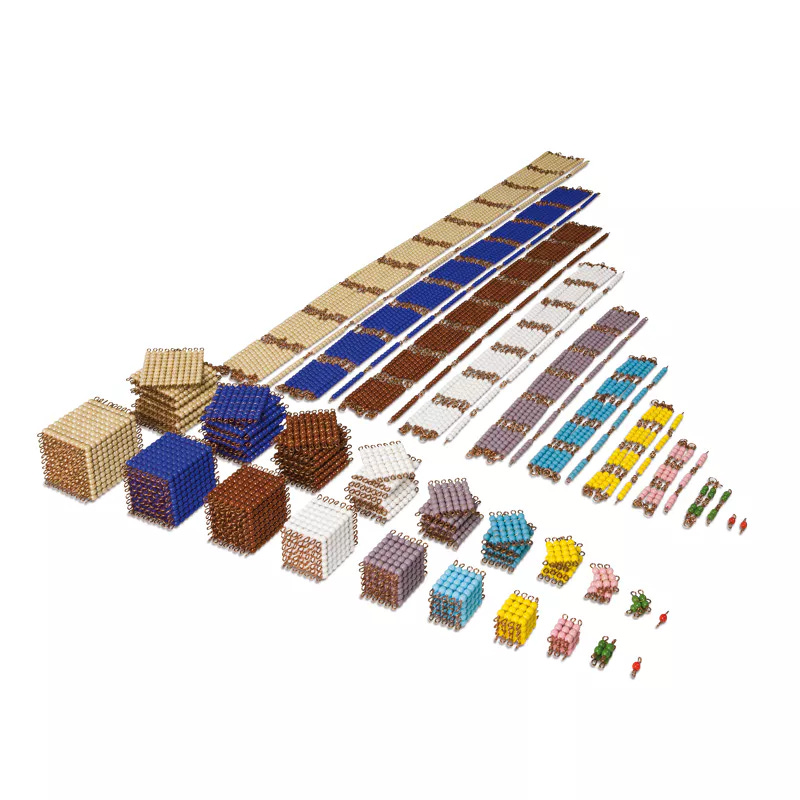Why Montessori Long Bead Chain Work Is Important
Beads Today, Algebra Tomorrow: Helping Children Feel the Logic of Math.
The Long Bead Chain work is used to teach linear and skip counting, helping children visualize and internalize the quantities of squares and cubes of numbers from 1 to 10. This foundational work prepares the child for more advanced concepts in multiplication, squaring, cubing, and base number systems
While it may seem simple, this equipment is a scaffolding tool that bridges the gap between concrete arithmetic and abstract algebra. It gently introduces children to mathematical structures—such as powers, patterns, and functions—that they will encounter again in more formal terms during pre-algebra, algebra, and pre-calculus.
Foundational Preparation Through Bead Material
The Montessori Bead Material introduces mathematical concepts in a concrete, hands-on way, allowing children to internalize abstract ideas through direct experience. As they work with this material, they build intuitive understanding and mental models that serve as a strong base for later abstract reasoning in advanced mathematics.
1. Understanding Patterns and Powers (Prepares for Exponents and Polynomials)
When children skip-count the square and cube chains (e.g., 1², 2², 3²… and 1³, 2³, 3³…), they are working with powers of numbers in a tactile and visual form.
This physical repetition and recognition of numerical patterns lay the groundwork for understanding exponents, polynomials, and functions.
Later, in pre-calculus, when students work with functions, they already have a concrete sense of how squares and cubes grow.
2. Visualizing Growth Rates (Prepares for Graphing and Analysis)
By seeing and building square and cube chains, children begin to visualize the difference in growth rates: linear, quadratic, and cubic.
This prepares them to later grasp the rate of change in functions, which is a core concept in algebra and calculus.
3. Multiplication Foundations (Prepares for Factoring and Algebraic Manipulation)
The bead bars and bead squares help solidify multiplication as repeated addition, and squares as structured multiplication (e.g., 4² as 4 × 4).
This early experience supports later work in factoring expressions because students already understand squares both numerically and spatially.
4. Base Number Systems and Place Value (Prepares for Algebra and Computer Science)
Working with beads also involves place value and base-ten structure, which is critical for algebraic thinking, scientific notation, and understanding binary and other base systems used in computing.
5. Mental Abstraction Through Repetition
Montessori emphasizes repetition with increasing abstraction. By working first with physical beads, then moving to paper abstraction (e.g., writing equations), students develop symbolic fluency that becomes essential in algebraic manipulation and function notation.
Compare the bead chains with a nice version of a standard lesson. As good as this is, try to imagine how confusing this is for a child.
And think about how much more straightforward the beads are than even a brilliant chalkboard discussion,
The need to present every single concept in a entrancing manner is one reason public school teachers burn out so fast. There aren’t enough coffee and donuts in the world to fuel this level of entertainment production for a whole career. I’m so glad YouTube came around for this lovely young teacher!



